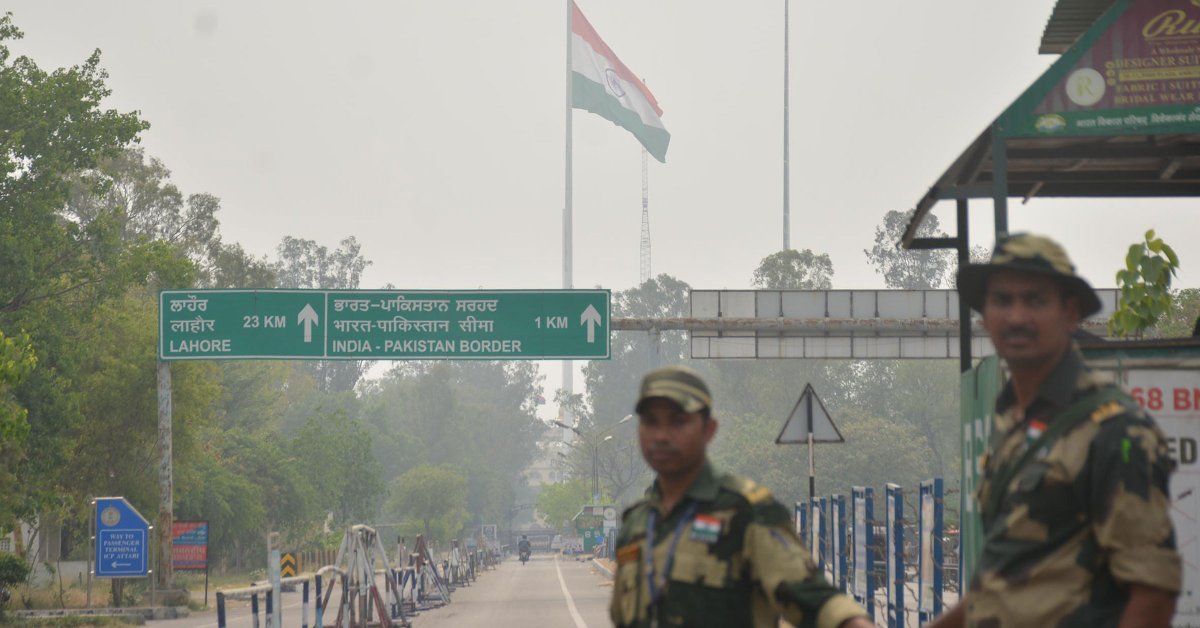India-Pakistan Missile Incident: Officials Confirm Accidental Launch, Heightening Regional Tensions
A stray missile launched from India landed in Pakistan on March 9th, 2022, sparking immediate concern and raising tensions between the two nuclear-armed rivals. While both countries have confirmed the incident, the details surrounding the event remain shrouded in a degree of uncertainty, further fueling anxieties in the region.
This unexpected event underscores the precarious security situation in South Asia and highlights the critical need for robust communication and preventative measures to avoid similar incidents in the future.
The Incident: A Brief Overview
The missile, identified as a BrahMos supersonic cruise missile, was reportedly launched accidentally from India during a routine maintenance exercise. It traversed Pakistani airspace before landing in Mian Channu, in Pakistan's Punjab province. Thankfully, there were no reported casualties, though the incident caused significant alarm and prompted swift reactions from both governments.
-
India's Response: Indian officials initially downplayed the incident, but eventually acknowledged the unintentional launch, attributing it to a "technical malfunction" during routine maintenance. They apologized for the incident and emphasized that it was a "regrettable accident" with no intention of targeting Pakistan.
-
Pakistan's Response: Pakistan, understandably, reacted with strong condemnation. They launched a formal investigation and summoned the Indian High Commissioner to express their serious concerns. The incident highlighted Pakistan’s vulnerability to potential cross-border attacks and underscored the need for heightened security vigilance.
Heightened Tensions and Geopolitical Implications
The incident, however accidental, has significantly escalated tensions between India and Pakistan, two nations with a history of conflict and military standoffs. The close proximity of the missile’s trajectory to populated areas emphasized the potential for catastrophic consequences. The incident also:
-
Raises questions about safety protocols: The accidental launch raises serious questions about the safety protocols and oversight in place for handling such sophisticated weaponry. Both countries face scrutiny regarding their ability to prevent future mishaps.
-
Exacerbates existing mistrust: The incident further erodes trust between the two nations, already burdened by decades of distrust and conflict. This makes diplomatic engagement and conflict resolution even more challenging.
-
Attracts international attention: The international community has expressed concerns, urging both countries to exercise restraint and prioritize dialogue to de-escalate the situation. The incident highlights the broader global implications of regional instability in South Asia.
Moving Forward: The Path to De-escalation
Preventing future incidents requires a multi-pronged approach:
-
Strengthening safety protocols: Both countries must review and enhance their safety protocols for handling advanced weaponry to minimize the risk of future accidental launches.
-
Improving communication channels: Establishing clear and effective communication channels is crucial to avoid misinterpretations and escalating tensions.
-
Promoting dialogue and diplomacy: Open and constructive dialogue between India and Pakistan is essential for building trust and resolving disputes peacefully. International mediation could play a constructive role in facilitating such dialogues.
The India-Pakistan missile incident serves as a stark reminder of the dangers of unchecked military escalation and the importance of proactive measures to prevent accidental conflicts. The incident demands a serious re-evaluation of safety protocols and renewed commitment to peaceful conflict resolution. The future stability of the region depends on it.
Keywords: India-Pakistan missile incident, BrahMos missile, accidental launch, South Asia, regional tensions, India Pakistan relations, military incident, geopolitical implications, international relations, security protocols.

